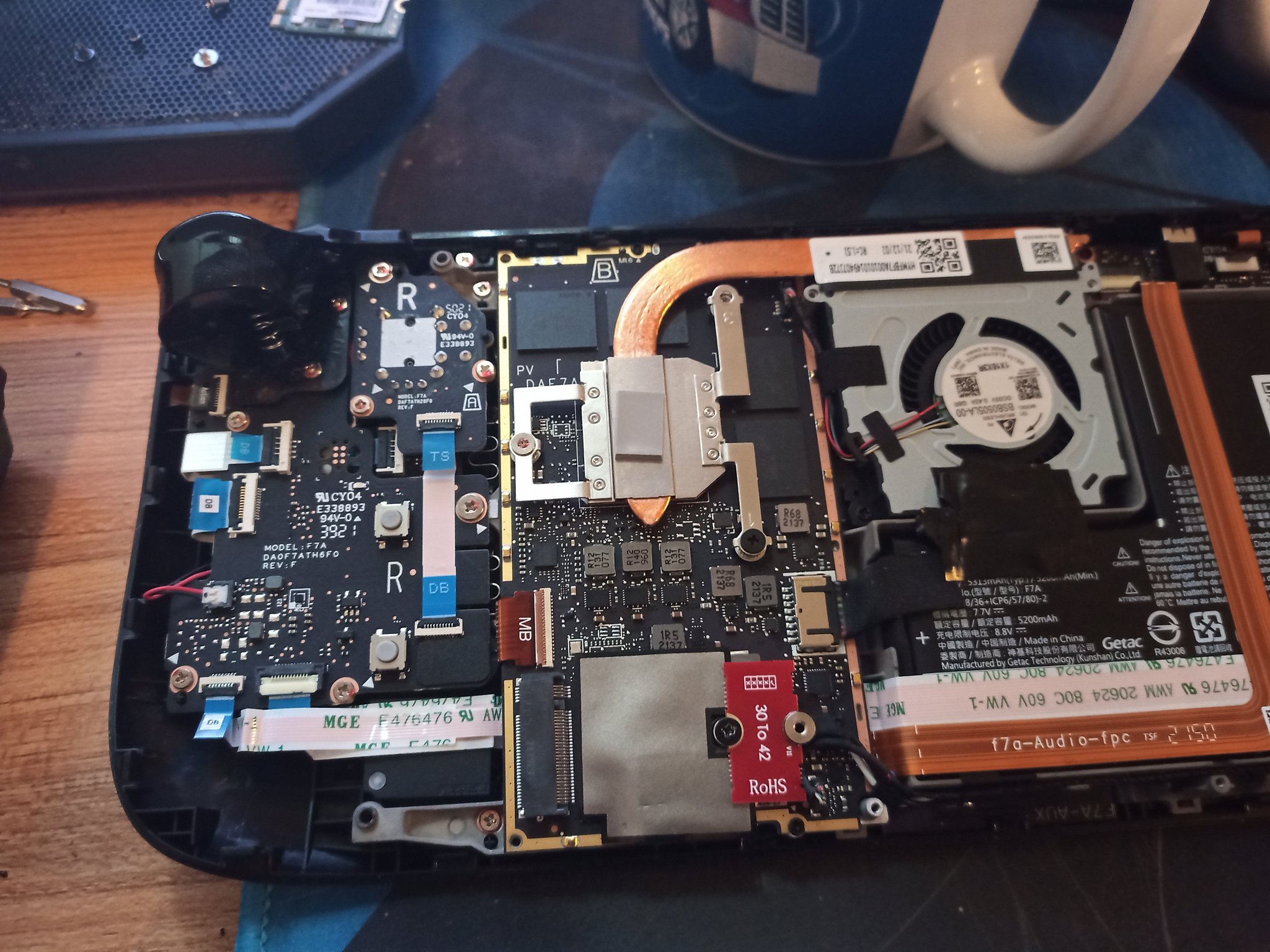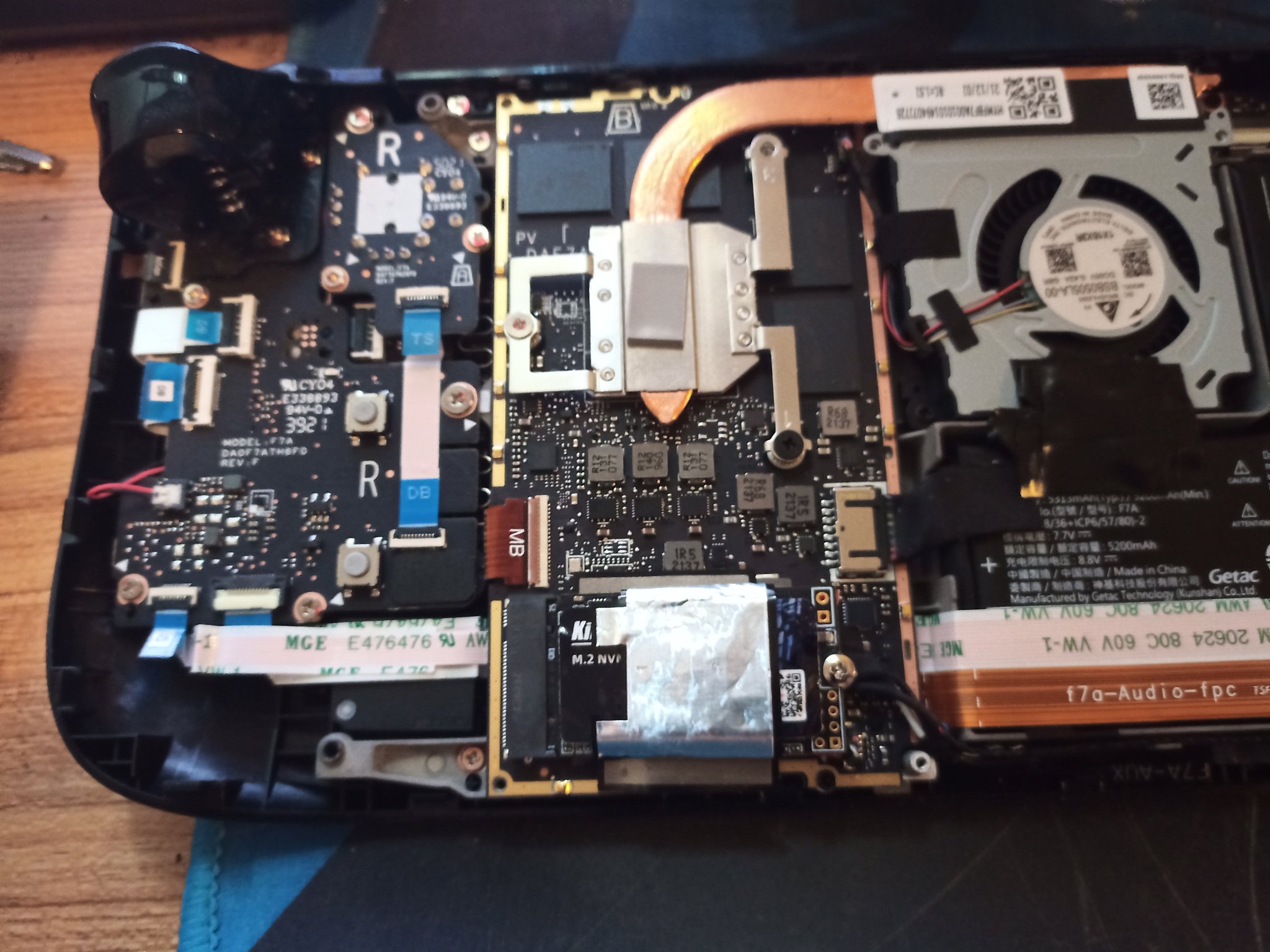Steam Deck Mod Allows for Longer M.2 SSD Upgrades
Contrary to popular belief, the best SSDs for Valve's Steam Deck aren't the ones with the fastest performance or the biggest capacity. That's right. The best SSD for the handheld gaming console is one that fits.
The Steam Deck has an M.2 2230 slot to house M.2 NVMe SSDs. While there are M.2 2230 SSDs on the market, it's not one of the widespread form factors such as M.2 2280. However, Twitter user Belly Jelly has discovered a way to expand the M.2 2230 slot to an M.2 2242 slot, opening the door to more SSD options. The resourceful Steam Deck owner ordered some small M.2 adapters to modify the device's standard M.2 slot. With the 30mm to 42m adapter, he could extend the slot's length to house the longer 2242 SSDs.
Belly Jelly noted that the Steam Deck's PCB was generous to allow him to adapt the M.2 2230 slot into an M.2 2242 one. His simple mod didn't interfere with any electronic components on the PCB or strain the cables. The only caveat was that the mod made the heat spreader bend slightly; however, it didn't stop him from reassembling the back plate. He highlighted that he had to remove a thermal pad on top of one of the inductors by the M.2 slot.
Belly Jelly didn't specify which M.2 2242 SSD he had installed in his Steam Deck, but the photograph partially reveals a KingSpec logo. The drive could be one of the brand's NE-series units with 3D TLC NAND and sequential read and write speeds up to 2,100 MBps and 1,000 MBps, respectively.
The Twitter user's experiment produced positive results as he could reinstall SteamOS and download his games onto the SSD. In addition, he reported average write speeds up to 406 MBps during installation once his download was completed.


Although the SSD inside the Steam Deck is user replaceable, DIYers must pay attention to specific parameters. Valve designed the Steam Deck to work with one particular SSD. Therefore, replacing it with an aftermarket unit could affect the handheld console's performance. According to Valve's guidelines, users must pay close attention to the power consumption of the SSD. If a third-party SSD draws more power than the stock SSD, users could experience overheating and reduced battery life.
Valve placed the M.2 2230 slot very close to the wireless module. The company has tested various SSDs to find one that doesn't interfere with the Steam Deck's wireless and Bluetooth connection. An aftermarket SSD could have a different emission pattern that might degrade wireless performance.
Get Tom's Hardware's best news and in-depth reviews, straight to your inbox.
Other aspects include the mechanical and assembly elements of the SSD. Valve has placed components underneath the SSD, and a different drive may interfere with the components. Furthermore, the company states that a particular screw holds down the thermal module onto the AMD SoC and the board shield. Removing it could potentially affect the thermal module's performance.
Swapping the SSD inside the Steam Deck doesn't seem like an easy task. However, DIYer Belly Jelly was seemingly successful in his attempt, though he hasn't reported any battery life or other testing before and after the upgrade. It may work fine, but there may also be some unexpected bugs or other issues using his aftermarket M.2 2242 SSD mod. Proceed with caution, in other words.

Zhiye Liu is a news editor, memory reviewer, and SSD tester at Tom’s Hardware. Although he loves everything that’s hardware, he has a soft spot for CPUs, GPUs, and RAM.
-
junglist724 Could help with capacity, but I'm pretty much always cpu bottlenecked on my deck when installing games or loading. Even on ethernet I can't really exceed 70MB/s on the 512GB nvme when installing because I'm pinned at 100% cpu usage from decompressing.Reply -
Sleepy_Hollowed Well... depending on what you're looking for, you might want to stop and think, if you play on the go a lot more, you might want a drive that has the lowest heat, less dissipated power and higher performance than the smaller ones, or else it's kind of a downgrade.Reply
I'd think that's the main use of this device unless you're a couch plugged player. -
mitch074 Reply
If they hadn't wanted to make it replaceable, they'd have soldered in the storage - as it is, it's more a design compromise than a fault.Alvar Miles Udell said:Design fault, or "the price of being too thin"...
A design fault would have been shipping the deck with a SSD that interferes with the wifi performance; a bad design choice would have been a soldered in SSD. -
-Fran- Reply
It's a design choice for sure; a trade off, if you will.mitch074 said:If they hadn't wanted to make it replaceable, they'd have soldered in the storage - as it is, it's more a design compromise than a fault.
A design fault would have been shipping the deck with a SSD that interferes with the wifi performance; a bad design choice would have been a soldered in SSD.
I have my Steam Deck and it's quite an impressive piece of tech. I think they could have gotten away with a few extra millimeters for better cooling and more space for components. That being said, faster SSDs imply more power and temperature as pointed out in the article, so they would need to redesign not only the extra space, but the cooling and power delivery.
All in all, I do think they can make it slightly bulkier and still be quite portable; I mean, it's already big, so making it a bit thicker wouldn't have been a massive increase in volume and weight. What it needs though, is a bigger battery. I wish they made the battery replaceable, but it seems like travel restrictions make it so that having replaceable batteries is more of a liability. Anyway, I like to think about it like the XBox 360's old battery pack for the wireless controller, if anyone remembers, haha. As for extra storage space, the SD card works great to my surprise. I thought it was going to be like in phones where the storage speed was noticeable different, but it's not that noticeable in the Deck, to my disbelief.
Regards. -
mitch074 Reply
Indeed - a replaceable battery requires a specific boat and shipping container where a glued battery doesn't. The impact per unit is in the order of several dollars, which due to taxes and all distribution fees can raise the price by up to a dozen bucks.-Fran- said:It's a design choice for sure; a trade off, if you will.
I have my Steam Deck and it's quite an impressive piece of tech. I think they could have gotten away with a few extra millimeters for better cooling and more space for components. That being said, faster SSDs imply more power and temperature as pointed out in the article, so they would need to redesign not only the extra space, but the cooling and power delivery.
All in all, I do think they can make it slightly bulkier and still be quite portable; I mean, it's already big, so making it a bit thicker wouldn't have been a massive increase in volume and weight. What it needs though, is a bigger battery. I wish they made the battery replaceable, but it seems like travel restrictions make it so that having replaceable batteries is more of a liability. Anyway, I like to think about it like the XBox 360's old battery pack for the wireless controller, if anyone remembers, haha. As for extra storage space, the SD card works great to my surprise. I thought it was going to be like in phones where the storage speed was noticeable different, but it's not that noticeable in the Deck, to my disbelief.
Regards.
As for the bulk, it's already almost too big; I really think they couldn't have allowed themselves to make it any bulkier and keep it usable even by smaller people (kids, women). -
digitalgriffin Replymitch074 said:Indeed - a replaceable battery requires a specific boat and shipping container where a glued battery doesn't. The impact per unit is in the order of several dollars, which due to taxes and all distribution fees can raise the price by up to a dozen bucks.
As for the bulk, it's already almost too big; I really think they couldn't have allowed themselves to make it any bulkier and keep it usable even by smaller people (kids, women).
I would have not gone after a flat back, but a wave back that allows you to wrap your hand around the controllers like kung fu grips, and allowed plenty of cooling/battery in the middle. This makes the console easy to grip no matter your size. -
happydance22 Reply
Neither lol. It's intentionally designed that way to make you purchase the extremely upmarked SSD version of the console since you can't upgrade it yourself.Alvar Miles Udell said:Design fault, or "the price of being too thin"...
A measly 256gb SSD runs you a hefty $130 extra, or ~33% more. This isn't any sort of accident. Hardware manufacturers have been pulling this nonsense since.. forever.